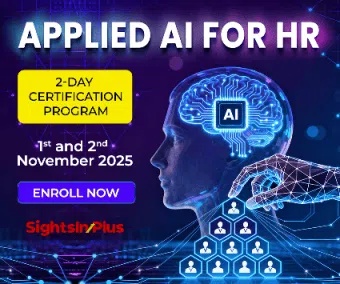Google’s success in achieving remarkable results can be attributed significantly to its use of Objectives and Key Results (OKRs).
This goal-setting framework, introduced by Andy Grove at Intel and later adopted by Google, helps organizations define and track objectives and their outcomes.
Google’s approach to OKRs (Objectives and Key Results) has become a popular framework for goal setting and management.
Here’s how Google effectively uses OKRs:
Transparency and Shared Focus
Breaking Silos, Building Alignment: Unlike traditional top-down goal-setting, Google fosters collaboration. Around 60% of OKRs are set by individual employees and then aligned with team and company goals.
This transparency across all levels ensures everyone understands the bigger picture and how their work contributes to the organization’s success.
Prioritization Powerhouse: Google uses a maximum of five objectives per quarter, with no more than four key results for each. This focus on a select few critical goals prevents teams from getting bogged down in a never-ending to-do list.
A Culture of Ambition and Measurement
Shooting for the Moon: Google sets ambitious objectives that push boundaries and encourage innovation. This fosters a culture where employees are constantly striving to improve and achieve the seemingly impossible.
Quantifiable Success: Each key result is measurable with a clear metric. This allows for data-driven decision-making, clear evaluation of progress, and adjustments as needed throughout the quarter.
Embrace Learning and Continuous Improvement
Regular Check-ins, Course Corrections: OKRs aren’t set in stone, highlight the flexible and adaptable nature of the Objectives and Key Results (OKRs) framework.
Regular reviews and discussions throughout the quarter allow teams to celebrate milestones, identify roadblocks, and adapt their approach as needed. This ensures goals remain relevant and achievable.
The Sweet Spot of Challenge: While ambitious goals are encouraged, Google doesn’t expect to perfectly achieve 100% on all OKRs. The ideal range is considered to be 60-70% completion. This indicates the goals were challenging yet achievable, leading to significant progress.
Learning from Every Step: Missing an OKR target isn’t a performance failing, but a valuable learning experience. Teams analyze what went wrong and adapt their strategies for the next quarter, fostering continuous improvement.
Also Watch: OKRs – Effective Goal Setting, Alignment and Track Progress, Click Here
Additional Considerations for Successful OKR Implementation
- Alignment Throughout: Individual, team, and company OKRs should be aligned to ensure everyone’s working towards the same overarching goals. This creates a unified focus and maximizes the impact of collective efforts.
- Technology as a Tool: Many organizations leverage OKR management software to streamline goal setting, track progress, and facilitate communication. These tools can be valuable assets for organizations of all sizes.
- Not a Performance Review Tool: It’s crucial to remember that OKRs are designed for goal setting and management, not for evaluating individual performance. Separate performance evaluation processes should be in place to assess employee contributions.
By following these practices, Google has leveraged OKRs to cultivate a culture of innovation, agility, and continuous improvement.
While the specifics might need adaptation for different organizations, the core principles of transparency, focus, ambition, measurement, and a growth mindset remain valuable for any company looking to achieve ambitious goals.
Credit: Generative AI
Note: We are also on WhatsApp, LinkedIn, Google News, and YouTube, to get the latest news updates, Subscribe to our Channels. WhatsApp– Click Here, Google News– Click Here, YouTube – Click Here, and LinkedIn– Click Here.



